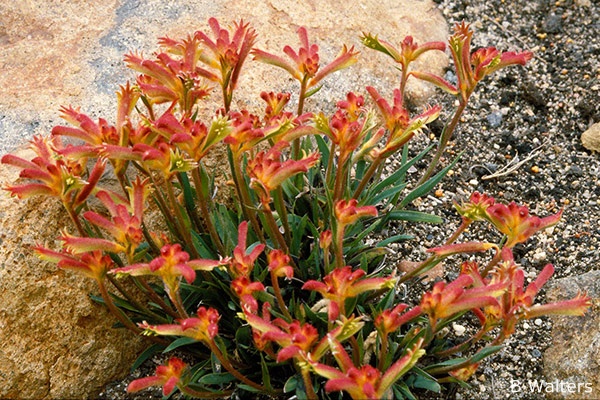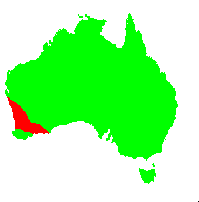General Description:
The Kangaroo Paws comprise a small group of 11 species in the genus Anigozanthos and a single species in the genus Macropidia. They are perennial herbs consisting of strap-like leaves arising from underground rhizomes. Flowers occur in clusters on stalks which emerge from the bases of the leaves. A number of species die back to the rhizome in summer, regenerating in autumn. All species are restricted in distribution to the southern areas of Western Australia.
A.humilis is the most common of the Kangaroo Paws and is particularly evident following bushfires. There are three subspecies:
- subsp.humilis…most widespread and smallest subspecies; flowers often with orange-red tones.
- subsp.chrysanthus…rare subspecies from the Darling Range; yellow flowers.
- subsp.“grandis”…much taller flower stems than other subspecies. Subspecies status yet to be formally recognised.
A.humilis is widely cultivated and can be grown successfully even in areas with humid summers which often cause plants from the west to fail. It would not normally be regarded as long lived in those area, however, five years being the usual maximum. As the plant flowers in its first year from seed, it can be fairly easily replaced. The leaves are usually short, rarely exceeding 300mm in height and the spring flowers are held on stems just above the foliage (except in subspecies “grandis“). Flowers are mainly yellow but orange and red forms are known.
In cultivation it requires a well drained, sunny position. If well watered it may retain its foliage after flowering but it can die back to the underground rhizome. In this case it should not be assumed that the plant has died as it may regenerate in autumn, particularly if watered. Fertilising with a low-phosphorus, slow-release fertiliser after flowering is beneficial.
A.humilis can be grown from seed without any pretreatment. The species can also be propagated by division of the clump, usually after flowering and only if the plant appears vigorous. Divisions should be potted into suitably sized containers and placed in a protected position until new growth has developed.
* EPBC Act = Environment Protection and Biodiversity Conservation Act 1999;
ROTAP = Rare or Threatened Australian Plants (Briggs and Leigh, 1988)
For further information refer the Australian Plants at Risk page

Anigozanthos humilis
Photo: Brian Walters
 Australian Native Plants Society (Australia)
Australian Native Plants Society (Australia)